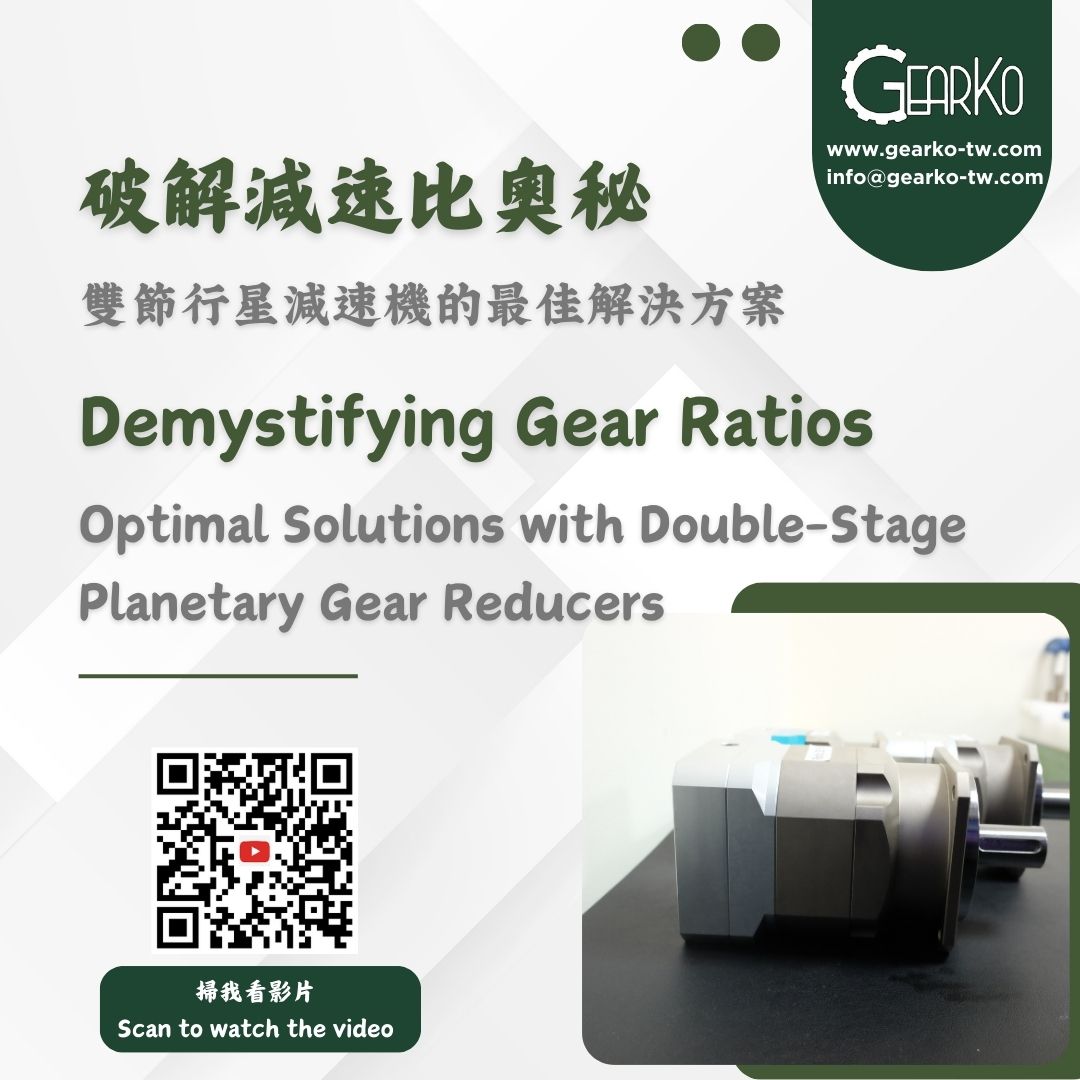2024.10.11
Demystifying Gear Ratios: Optimal Solutions with Double-Stage Planetary Gear Reducers

One of the major challenges in the field of industrial automation is how to achieve efficient transmission within limited installation space while reducing costs. Engineers have long sought solutions that enhance efficiency and optimize space. Today, double-stage planetary gear reducers offer the ideal answer to this problem.
When selecting a gear reducer, the gear ratio is a key factor. Many people may have experienced the situation where they received a gear reducer but couldn't determine its ratio due to unclear labeling. In fact, there’s a simple method to test the gear ratio manually. Just rotate the input shaft five times and observe the output shaft's rotation. If the output shaft rotates once, the gear reducer has a 5:1 ratio. In other words, for every one turn of the input shaft, the output shaft rotates one-fifth of a turn, or approximately 72 degrees. Using this simple method, you can easily determine the gear ratio of various reducers.
However, when a higher gear ratio is required, a single-stage gear reducer may not suffice. This is where the double-stage planetary gear reducer shines. The gear ratio of a double-stage reducer is achieved by multiplying the ratios of two single-stage reducers. For example, a 15:1 gear reducer is made by combining a 3:1 gear set with a 5:1 gear set. In practical applications, the 5:1 gear set typically goes on the output side as it produces stable, high torque due to the optimal ratio between the sun gear and the planetary gears. The 10:1 gear set, with its relatively weaker sun gear, is usually placed on the input side.
So, how can we effectively achieve a high gear ratio? Let’s consider a specific example: when a 25:1 planetary gear reducer is needed, the traditional approach is to use two 5:1 gear reducers in series, making the input shaft rotate 25 times to achieve one turn of the output shaft. However, this method is both costly and takes up more installation space.
By contrast, using a double-stage planetary gear reducer can solve these problems more effectively. By adjusting the components, we can integrate two gear sets into a single unit with a double-stage structure. This not only reduces the overall length of the equipment but also cuts the cost of purchasing and maintaining two separate devices. With a double-stage reducer, the input shaft rotates 25 times, and the output shaft rotates once, achieving the same gear ratio with significantly less space and cost.
For instance, take the frame size 90 model: using two 5:1 gear reducers results in an additional 130mm in length compared to a single 25:1 double-stage reducer. The weight difference is 2.3kg, and the cost is 20% higher for the two-unit solution. Therefore, in terms of installation space, overall weight, and cost, the double-stage planetary gear reducer is clearly the more economical and practical choice.
Why is the double-stage planetary gear reducer your best option?
First, it delivers a high gear ratio, significantly improving transmission efficiency. Additionally, it excels at optimizing equipment cost and installation space, making it ideal for applications with limited space. Its compact design also makes it more reliable, reducing the need for maintenance.
If you're looking for a transmission solution that meets high gear ratio requirements or have any questions about double-stage planetary gear reducers, feel free to contact our professional team. GearKo has been dedicated to the research and manufacturing of planetary gear reducers for many years, and we are ready to offer you the most cost-effective solutions.
For a more visual understanding of how the double-stage planetary gear reducer works and its practical applications, check out our video. The video provides a detailed demonstration, helping you further understand how double-stage gear reducers can save costs and compress installation space.
Don’t forget to like, share, and subscribe to our channel for more technical updates!